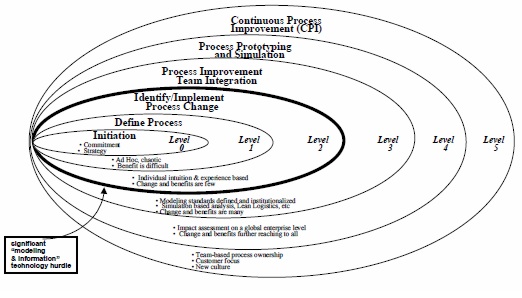Services - Business Process Re-engineering

Satvin Consulting engineering team has a proven track record of doing the BPR, this can benefit the organisations in the following ways:
- A team-based effort guided by a proven, structured methodology that is aided by a powerful set of methods and supporting tools.
- A focus on business processes rather than functions.
- Cross-organizational process restructuring.
- Challenges established assumptions.
- CPI activity enabling both incremental and paradigm shift change.
- A “Think Globally, Act Locally” approach.
- A well planned effort with clear goals, defined business metrics, and
- Measurable results throughout the effort.
- Technology that can support the change.
The BPR business model that we have adopted comprises of six phases.
- Initiation - Extract the activities that need to be performed,
- Definition-
- Define on which outputs of those activities are needed,
- Define on which relations between the activities will be enforced
- Define the team and their role and responsibilities
- Identification and Implementation
- Identify on the process of execution,
- Identify the team,
- Implement the process change
- Execute the re-engineered process,
- Process Improvement- Collect the data, feedback and business knowledge to improve the process and compare it with Engineering best practices, Analyse cost savings.
- Process Simulation
- And Continuous improvement- A roadmap to take your organisation standard in the next 5 to 10 years

Initially, BPR was practiced almost as a black art. Satvin Group engineers have emerged as the beginnings of an engineering discipline with both standard blueprinting conventions and powerful performance and cost prediction models.
A recognizable benefit of the approach is in its cost effectiveness, its holistic nature, and its focus on inserting an organic BPR capability within the organization. With a “Just-In-Time,” in-context training strategy the approach can be successfully applied to assist projects in clearing the common hurdles that typically stagnate reengineering efforts. This assertion is based on the observation that institutionalizing reengineering is fundamentally a learning (and sometimes “unlearning”) process. As such, we feel it is important that the participants have an understanding of, and appreciation for, the methods, tools, and techniques that will be used during the project and afterward to institute continuous process improvement (CPI). This strategy, when coupled with a step-by-step reengineering framework, can assist organizations in sustaining momentum through successful implementation and the establishment of a continuous improvement culture. The approach presented is holistic in the sense that we don’t offer a “canned” solution: “just change this process, downsize support staff, purchase this software.” Instead, we recommend use of the techniques necessary to analyze and understand the enterprise from organizational, process-oriented, and job performer perspectives.
What distinguishes our engineering from others is a structured methodology, grounded in observations and facts, guided by sound models, and targeted toward realistic (though far reaching) goals.



